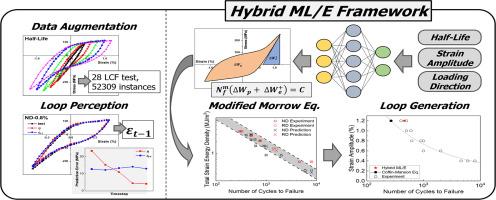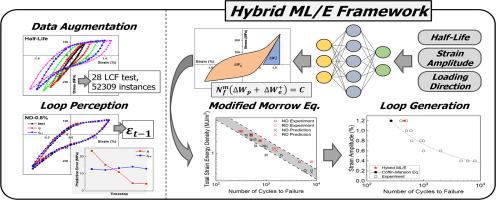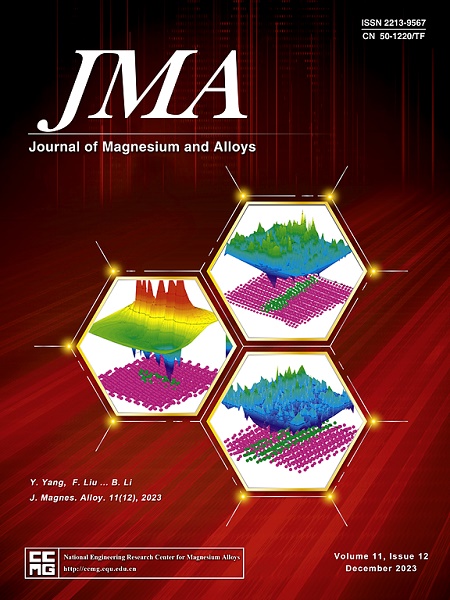基于机器学习和能量建模的低循环疲劳寿命替代预测方法
IF 15.8
1区 材料科学
Q1 METALLURGY & METALLURGICAL ENGINEERING
引用次数: 0
摘要
镁合金因其轻质特性和出色的可加工性,在汽车和航空航天工业中具有极高的价值。这些行业的应用要求对循环载荷下的疲劳寿命进行准确预测。然而,由于许多锻轧镁合金具有明显的塑性各向异性,这对它们来说具有挑战性。传统的预测方法(如 Coffin-Manson 方程)需要根据不同条件手动调整参数,因此限制了其适用性。因此,本文提出了一种结合机器学习(ML)和基于能量的物理模型的新型低循环疲劳(LCF)寿命预测模型,称为混合 ML/E 模型。混合 ML/E 模型利用从轧制 AZ31 Mg 合金的 LCF 测试中生成的大量磁滞环数据集来有效预测疲劳寿命。所提出的方法解决了小型疲劳数据集、滞后环感知和算法选择等固有难题。根据对传统方法的验证,混合 ML/E 模型在各种加载方向上都表现出卓越的预测精度和稳健性。ML 与物理原理的整合为各向异性材料的 LCF 寿命预测提供了一个统一的框架,是工业应用领域的一大进步。本文章由计算机程序翻译,如有差异,请以英文原文为准。


Alternative predictive approach for low-cycle fatigue life based on machine learning and energy-based modeling
Mg alloys are extremely valuable in the automotive and aerospace industries because of their lightweight properties and excellent machinability. The applications in these industries necessitate the accurate prediction of fatigue life under cyclic loading. However, this is challenging for many wrought Mg alloys owing to their pronounced plastic anisotropy. Conventional predictive methods such as the Coffin-Manson equation require manual parameter adjustment for different conditions, thus limiting their applicability. Accordingly, a novel predictive model for low-cycle fatigue (LCF) life that combines machine learning (ML) with an energy-based physical model, referred to as the hybrid ML/E model, is proposed herein. The hybrid ML/E model leverages a substantial hysteresis-loop dataset generated from LCF tests on a rolled AZ31 Mg alloy to effectively predict fatigue life. The proposed approach addresses the inherent challenges of small fatigue datasets, hysteresis-loop perception, and algorithm selection. The hybrid ML/E model demonstrates superior predictive accuracy and robustness in various loading directions, based on validation against conventional methods. The integration of ML and physical principles offers a unified framework for the LCF life prediction of anisotropic materials and represents a significant advancement for industrial applications.
求助全文
通过发布文献求助,成功后即可免费获取论文全文。
去求助
来源期刊

Journal of Magnesium and Alloys
Engineering-Mechanics of Materials
CiteScore
20.20
自引率
14.80%
发文量
52
审稿时长
59 days
期刊介绍:
The Journal of Magnesium and Alloys serves as a global platform for both theoretical and experimental studies in magnesium science and engineering. It welcomes submissions investigating various scientific and engineering factors impacting the metallurgy, processing, microstructure, properties, and applications of magnesium and alloys. The journal covers all aspects of magnesium and alloy research, including raw materials, alloy casting, extrusion and deformation, corrosion and surface treatment, joining and machining, simulation and modeling, microstructure evolution and mechanical properties, new alloy development, magnesium-based composites, bio-materials and energy materials, applications, and recycling.
 求助内容:
求助内容: 应助结果提醒方式:
应助结果提醒方式:


